Posts By Megan Johnston
What is the difference between a belt dewatering press and a filter press?
Belt dewatering press and filter press are both equipment used in various industries for solid-liquid separation. While they share some similarities, there are distinct differences between the two. In this article, we will explore the differences between a belt dewatering press and a filter press.
Belt Dewatering Press
A belt dewatering press is a type of equipment that uses a continuous belt to separate solids from liquids. The belt is made of a permeable material, such as polypropylene or polyester mesh, and is designed to allow liquids to pass through while retaining solids.
The belt is typically inclined at an angle, and the solids are loaded onto the belt through a feeding system. As the belt moves through the machine, the solids are subjected to a series of rollers that apply pressure to the solids, causing the liquids to be squeezed out. The dewatered solids are then discharged from the end of the belt, while the filtered liquids are collected in a tank for further treatment.

Filter Press
A filter press, on the other hand, is a type of equipment that uses a series of filters to separate solids from liquids. The filters are typically made of a porous material, such as paper or polypropylene, and are designed to allow liquids to pass through while retaining solids.
The filters are arranged in a stack, and the solids are loaded onto the top filter through a feeding system. As the liquids are pumped through the filters, the solids are retained on the surface of the filters, and the filtered liquids are collected in a tank for further treatment.
Differences between Belt Dewatering Press and Filter Press
The main difference between a belt dewatering press and a filter press is how the solids are separated from the liquids. In a belt dewatering press, the solids are separated from the liquids through a continuous belt, while in a filter press, the solids are separated from the liquids through a series of filters.
Additionally, the belt dewatering press uses a mechanical pressing action to remove liquids from the solids, while the filter press relies on the porosity of the filters to separate the solids from the liquids.
Another key difference between the two is the level of dewatering that can be achieved. Belt dewatering presses are typically able to achieve a higher level of dewatering than filter presses, as the mechanical pressing action can remove more liquids from the solids.
However, filter presses can achieve a higher level of purity in the filtered liquids, as the filters can remove finer particles and impurities from the liquids.
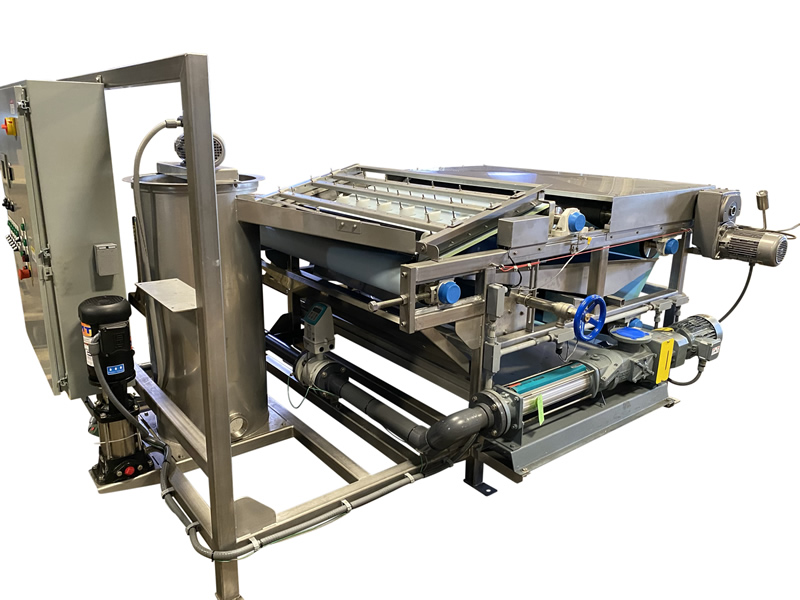
Applications of Belt Dewatering Press and Filter Press
Belt dewatering presses are commonly used in applications such as wastewater treatment, mineral processing, and food processing. They are particularly useful in situations where a high level of dewatering is required, such as in the production of animal feed or fertilizer.
Filter presses, on the other hand, are commonly used in applications such as chemical processing, pharmaceutical manufacturing, and wastewater treatment. They are particularly useful in situations where a high level of purity is required in filtered liquids, such as in the production of drinking water or pharmaceuticals.
Conclusion
In conclusion, while both belt dewatering presses and filter presses are used for solid-liquid separation, they differ in their method of operation and the level of dewatering that can be achieved. Belt dewatering presses use a continuous belt to separate solids from liquids, while filter presses use a series of filters to achieve the same goal.
The choice between the two will depend on the specific requirements of the application, such as the level of dewatering required, the purity of the filtered liquids, and the type of solids being separated.
How do 6 Inch Schedule 40 Galvanized Steel Pipe contribute to sustainable construction practices?
6-inch Schedule 40 galvanized steel pipes can contribute to sustainable construction practices in several ways:
- Durability and Longevity: Galvanized steel pipes have a protective zinc coating that enhances their durability and extends their lifespan. By using galvanized steel pipes in construction projects, the need for frequent replacements or repairs is reduced, leading to less material waste over time.
- Recyclability: Steel is one of the most recycled materials in the world, and galvanized steel pipes are no exception. At the end of their service life, galvanized steel pipes can be recycled and used to produce new steel products, reducing the demand for virgin materials and minimizing environmental impact.
- Energy Efficiency: Galvanized steel pipes have low thermal conductivity, meaning they are not as prone to heat loss or gain compared to other materials. This property can contribute to energy efficiency in buildings by reducing the need for heating or cooling, thereby lowering energy consumption and greenhouse gas emissions associated with HVAC systems.
- Water Conservation: Galvanized steel pipes are commonly used for water distribution systems in buildings and infrastructure projects. Their smooth interior surface minimizes friction and pressure loss, leading to more efficient water distribution and reduced energy consumption by pumps. Additionally, galvanized steel pipes are resistant to corrosion and leakage, helping to conserve water resources.
- Versatility: 6-inch Schedule 40 galvanized steel pipes are versatile and can be used in a wide range of construction applications, including plumbing, HVAC systems, structural support, and outdoor installations. 6 Inch Schedule 40 Galvanized Steel Pipe Price Their strength, durability, and corrosion resistance make them suitable for both indoor and outdoor use, contributing to the overall sustainability of construction projects.
- LEED Certification: The use of galvanized steel pipes in construction projects may contribute to earning Leadership in Energy and Environmental Design (LEED) certification points. LEED is a widely recognized green building rating system that rewards sustainable construction practices, including the use of recycled and recyclable materials, energy efficiency measures, and water conservation strategies.
- Low Maintenance: Galvanized steel pipes require minimal maintenance over their lifespan, reducing the need for ongoing upkeep and associated environmental impacts. This can lead to cost savings and environmental benefits over time, making galvanized steel pipes a sustainable choice for construction projects.
Overall, 6-inch Schedule 40 galvanized steel pipes contribute to sustainable construction practices by providing durability, recyclability, energy efficiency, water conservation, versatility, and low maintenance requirements. Incorporating these pipes into construction projects can help reduce environmental impact and promote long-term sustainability in the built environment.
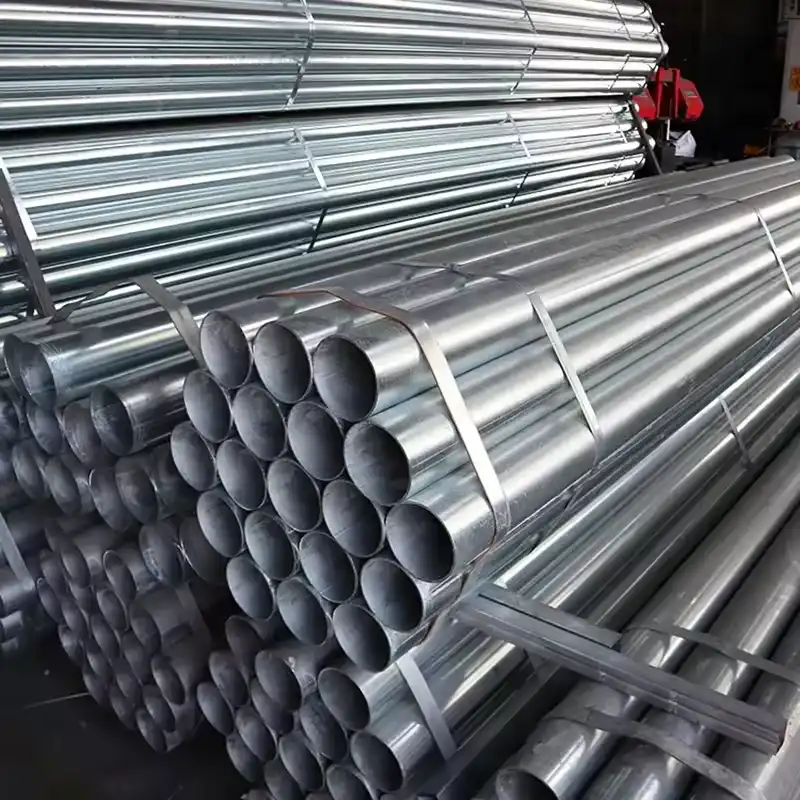
How do roller manufacturers test the quality?
In recent years, with the rapid development of the logistics and transportation industries, the application of rollers has become more and more widespread, and their importance has become increasingly prominent. However, when purchasing rollers, many customers often cannot judge their quality based on appearance, so many people are very concerned about how roller manufacturers test quality.
Roller wheel manufacturers need to carry out strict inspection of raw materials. The basic material of rollers is high-strength steel plates. In order to ensure the quality and service life of rollers, manufacturers need to conduct strict quality inspection and selection of steel plates. These tests include heat treatment, composition testing and tensile force testing.
Secondly, roller manufacturers need to conduct quality control on the production process. The production process of rollers includes cutting, bending, welding and other steps. In order to ensure the stability and quality of the rollers, the production process needs to be strictly controlled. Through inspection and testing of each process, some possible quality problems can be discovered and corrected in time.
In addition, manufacturers need to conduct special testing and inspection for key components of rollers, such as rims and tires. For tires, manufacturers need to conduct tests such as fastness testing, life testing, and load capacity evaluation to ensure the quality and stability of the tires. For rims, parameters such as diameter, parallelism, roundness, surface roughness, etc. of the axle need to be checked as well as strength assessment based on durability.
The manufacturer also needs to conduct comprehensive testing and quality assessment of the rollers. These inspections include visual inspection, ground swing test, brake test, etc. Manufacturers need to ensure that the rollers can not only operate smoothly and safely under normal conditions, but also maintain stability in harsh environments.
In short, how the roller manufacturers test their quality is an issue that many customers who purchase rollers are very concerned about. Through strict control and supervision of raw materials, production processes, key components, and comprehensive testing, roller manufacturers can ensure the quality and stability of rollers. This also provides customers with higher quality, more reliable shipping support.
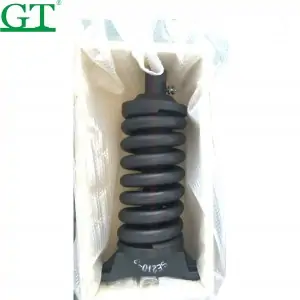
How do mini excavator parts affect the maintenance schedule of an excavator?
What are the benefits of using reinforced mini excavator parts?
How do track shoe designs vary between different excavator undercarriage parts models?
Track shoe designs can vary significantly between different models of excavator undercarriage parts due to differences in manufacturer preferences, intended applications, and operating conditions.
Here are some ways in which track shoe designs may vary:
- Shape and Profile: Track shoes can come in various shapes and profiles, including single or double grouser designs. The shape and profile affect the traction, stability, and ground pressure distribution of the excavator. Some designs may feature tapered edges or self-cleaning profiles to reduce material buildup and improve performance in muddy or abrasive conditions.
- Material Composition: Track shoes are typically made from high-strength steel alloys, but the specific composition and heat treatment processes may vary between models. Different materials and treatments can affect the durability, abrasion resistance, and overall lifespan of the track shoes.
- Width and Length: Track shoes come in different widths and lengths to accommodate various excavator sizes and weight classes. Wider track shoes offer better flotation and stability on soft or loose terrain, while narrower track shoes may provide improved maneuverability in confined spaces.
- Fastening Mechanisms: The method of attaching track shoes to the track chains can vary between models. Some track shoes use bolt-on or welded-on configurations, while others may feature advanced locking systems or quick-change mechanisms for easier installation and maintenance.
- Track Shoe Pattern: The pattern or arrangement of the treads on the track shoe surface can vary between models. Different tread patterns are optimized for specific applications, such as providing maximum traction in muddy conditions, excavator undercarriage parts suppliers minimizing soil disturbance on delicate surfaces, or enhancing durability in rocky terrain.
- Reinforcement Features: Some track shoe designs incorporate reinforcement features, such as thicker material sections or hardened wear bars, to improve durability and resistance to abrasion, impact, and bending stresses.
- Track Shoe Extensions: In certain applications, such as swamp or marshland operations, track shoes may include extensions or plates to increase the surface area and distribute the machine’s weight more evenly, reducing ground pressure and minimizing sinking.
- Environmental Considerations: Track shoe designs may also take into account environmental factors such as temperature extremes, moisture levels, and corrosive substances. Specialized coatings or materials may be used to enhance corrosion resistance and protect against premature wear and degradation.
Overall, track shoe designs are tailored to meet the specific performance requirements, operational challenges, and environmental conditions encountered by different models of excavator undercarriage parts. Manufacturers continuously innovate and refine track shoe designs to improve performance, durability, and efficiency in various applications and operating environments.
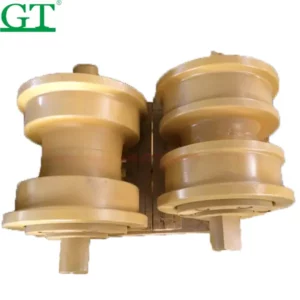
What is the difference between a belt dewatering press and a filter press?
Belt dewatering presses are better suited for materials that are difficult to filter and require high solids concentration, while filter presses are better suited for materials that can be easily filtered and require high filtration efficiency.
When it comes to solid-liquid separation and dewatering, two common machines used in these processes are belt dewatering presses and filter presses. While they share some similarities.
There are key differences between the two that make them better suited for different applications. In this article, we will explore the main differences between belt dewatering presses and filter presses, and discuss the advantages and limitations of each.
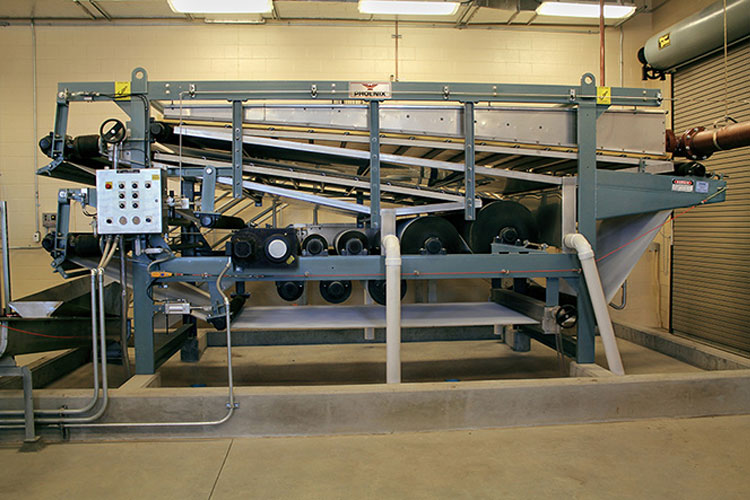
Belt Dewatering Presses
A belt dewatering press is a machine used for solid-liquid separation and dewatering. It consists of a series of rollers and a belt that runs through them. The belt is designed to press against the rollers, creating a pressure that squeezes out excess liquid from the solid material being processed. The liquid is then collected and removed, leaving behind a dry solid product.
Filter Presses
A filter press, on the other hand, is a machine used for solid-liquid separation. It consists of a series of plates and frames that are stacked together. The plates are designed to filter out the solid particles from the liquid, allowing the liquid to pass through while the solids are collected and removed.
Key Differences
The main difference between a belt dewatering press and a filter press is the way they separate solids and liquids. A belt dewatering press uses pressure to squeeze out liquid from a solid material, while a filter press uses a filtration process to separate the solids from the liquid.
Another key difference is the type of material that can be processed. Belt dewatering presses are typically used for materials that are difficult to filter, such as sludges, slurries, and other viscous materials. Filter presses, on the other hand, are better suited for materials that can be easily filtered, such as water and other liquids.
Advantages and Limitations
Belt dewatering presses have several advantages, including:
Higher solids concentration: Belt dewatering presses can produce a higher solids concentration than filter presses, making them more efficient for some applications.
Continuous operation: Belt dewatering presses can operate continuously, allowing for a steady stream of production.
Low energy consumption: Belt dewatering presses require less energy to operate than filter presses, making them a more cost-effective option.
However, belt dewatering presses also have some limitations. They can be less effective for materials that are difficult to dewater, and they may require more maintenance than filter presses.
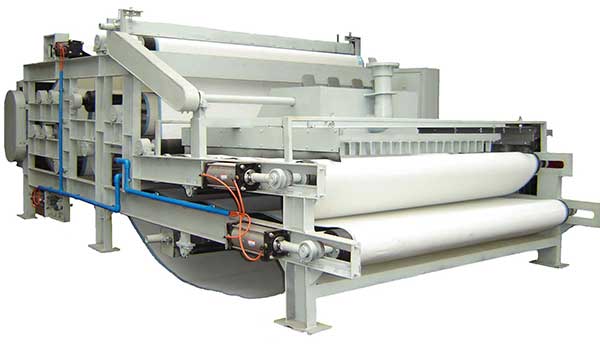
Filter presses, on the other hand, have several advantages, including:
Higher filtration efficiency: Filter presses can filter out smaller particles than belt dewatering presses, making them more effective for certain applications.
Easy to operate: Filter presses are relatively easy to operate and maintain, making them a good choice for many industries.
Versatility: Filter presses can be used for a wide range of applications, including water treatment, chemical processing, and food and beverage production.
However, filter presses also have some limitations. They can be less effective for materials that are viscous or have a high solid content, and they may require more space and energy to operate.
Conclusion
In conclusion, belt dewatering presses and filter presses are both effective machines for solid-liquid separation and dewatering. However, they have different strengths and weaknesses, and the choice between the two will depend on the specific needs of the application.
Belt dewatering presses are better suited for materials that are difficult to filter and require high solids concentration, while filter presses are better suited for materials that can be easily filtered and require high filtration efficiency. By understanding the key differences between these machines, industries can make informed decisions about which equipment to use for their specific needs.
How does the mini excavator undercarriage parts contribute to the machine’s overall performance and efficiency?
The mini excavator undercarriage parts play a crucial role in the machine’s overall performance and efficiency by providing support, stability, and mobility.
Here’s how these components contribute to the machine’s performance:
- Support and Stability: The undercarriage parts, including the track frame, track chains, rollers, idlers, sprockets, and segments, support the weight of the machine and distribute it evenly across the tracks. This ensures stability and prevents tipping or tilting during operation, allowing the excavator to work safely and efficiently on various terrains.
- Mobility and Maneuverability: The undercarriage parts enable the excavator to move and maneuver effectively, even in confined spaces or challenging environments. The tracks provide traction and flotation, allowing the machine to traverse soft, muddy, or uneven terrain with ease. Additionally, the idlers, rollers, and sprockets help maintain proper track tension, alignment, and engagement, ensuring smooth and controlled movement.
- Durability and Longevity: High-quality undercarriage parts are essential for maximizing the durability and longevity of the machine. Components made from durable materials, such as alloy steel or manganese steel, can withstand the rigors of heavy-duty operation and resist wear, abrasion, and impact. Proper maintenance, including lubrication, inspection, and replacement of worn parts, further extends the service life of the undercarriage components.
- Efficiency and Productivity: A well-maintained undercarriage contributes to the overall efficiency and productivity of the excavator. Smooth-running tracks, properly tensioned chains, and aligned undercarriage components reduce friction, resistance, and power loss, allowing the machine to operate more efficiently and achieve higher productivity levels. Additionally, reliable undercarriage parts minimize downtime and maintenance-related delays, maximizing uptime and productivity on the job site.
- Adaptability and Versatility: Mini excavator undercarriage parts are designed to adapt to various operating conditions and applications. Modular components, such as bolt-on segments and adjustable tensioners, allow for easy customization and adjustment to suit different terrains, tasks, and working environments. This versatility enables the excavator to tackle a wide range of tasks efficiently, from excavation and grading to landscaping and demolition.
Overall, the mini excavator undercarriage parts are integral to the machine’s performance and efficiency by providing support, stability, mobility, durability, longevity, productivity, and versatility. Investing in high-quality undercarriage components and implementing regular maintenance practices are essential for maximizing the performance and lifespan of the machine and ensuring optimal operation on the job site.

What steps are taken to ensure the durability of the excavator sprocket under heavy loads?
Ensuring the durability of the excavator sprocket under heavy loads involves several key steps and considerations:
- Material Selection: Sprockets are typically constructed from high-strength materials such as alloy steel or manganese steel. These materials offer excellent wear resistance, hardness, and toughness, making them well-suited for withstanding heavy loads and prolonged use in demanding applications.
- Heat Treatment: Sprockets undergo heat treatment processes such as quenching and tempering to enhance their mechanical properties. Heat treatment increases the hardness and strength of the sprocket, improving its resistance to wear, fatigue, and deformation under heavy loads.
- Tooth Profile and Design: The tooth profile and design of the sprocket are optimized to distribute the load evenly across the teeth and minimize stress concentrations. Proper tooth geometry ensures smooth engagement with the track chain and reduces wear on both the sprocket and track components.
- Surface Hardening: Critical wear surfaces of the sprocket, such as the tooth faces and flanges, may undergo surface hardening treatments such as induction hardening or flame hardening. Surface hardening increases the wear resistance of the sprocket and prolongs its service life under heavy loads.
- Bearing Support: Sprockets are supported by bearings that help distribute the load and facilitate smooth rotation. High-quality bearings with adequate load-carrying capacity and durability are essential for ensuring reliable performance of the sprocket under heavy loads.
- Proper Lubrication: Adequate lubrication is essential for reducing friction, China excavator sprocket suppliers heat, and wear between the sprocket and track chain. Lubrication prevents metal-to-metal contact, reduces wear on critical surfaces, and helps dissipate heat generated by friction, improving the durability of the sprocket under heavy loads.
- Regular Inspection and Maintenance: Regular inspection and maintenance of the sprocket are essential for identifying wear, damage, or other issues that could compromise its durability and performance. Visual inspection, measurement of wear patterns, and lubrication checks should be performed according to the manufacturer’s recommendations to ensure optimal sprocket performance under heavy loads.
- Load Management: Proper load management and operating practices help minimize stress on the sprocket and extend its service life. Avoiding excessive loads, sudden impacts, and prolonged operation at maximum capacity can reduce wear and fatigue on the sprocket and other undercarriage components.
By implementing these steps and considerations, excavator manufacturers and operators can ensure the durability and reliability of the sprocket under heavy loads, ultimately extending the service life of the machine and minimizing downtime and maintenance costs.
How does the excavator segment perform in applications with high levels of shock and vibration?
In applications with high levels of shock and vibration, such as heavy-duty excavation, demolition, or rock-breaking operations, the excavator segments play a critical role in ensuring durability and performance. Here’s how excavator segments perform under such conditions:
- Material Selection: Excavator segments are typically constructed from high-strength, abrasion-resistant materials such as alloy steel or manganese steel. These materials are chosen for their ability to withstand shock, impact, and abrasion, making them well-suited for heavy-duty applications with high levels of vibration.
- Heat Treatment: Segments undergo heat treatment processes such as quenching and tempering to enhance their mechanical properties, including hardness, toughness, and fatigue resistance. Heat treatment increases the strength and durability of the segments, allowing them to withstand the rigors of high-impact and high-vibration applications.
- Segment Design: The design of excavator segments is optimized to distribute and absorb shock and vibration effectively. Reinforced sections, tapered edges, and proper geometry help minimize stress concentrations and reduce the risk of fatigue or failure under dynamic loading conditions.
- Bolt-on Design: Many excavator segments feature a bolt-on design that allows for easy replacement when worn or damaged. This modular design simplifies maintenance and reduces downtime by enabling quick and cost-effective replacement of individual segments without requiring extensive disassembly of the undercarriage.
- Sealing and Lubrication: Effective sealing and lubrication systems are essential for protecting the segment bearings and components from contamination and wear. China excavator segment suppliers Sealed bearings and lubrication channels help prevent ingress of dirt, water, and debris, ensuring smooth operation and extending the service life of the segments in high-vibration environments.
- Bearing Support: Segments are supported by bearings that help absorb shock and vibration and facilitate smooth rotation. High-quality bearings with adequate load-carrying capacity and shock absorption properties are essential for ensuring reliable performance of the segments under dynamic loading conditions.
- Regular Inspection and Maintenance: Regular inspection and maintenance of the segments are essential for detecting wear, damage, or other issues that could compromise their performance. Visual inspection, measurement of wear patterns, and lubrication checks should be performed according to the manufacturer’s recommendations to ensure optimal segment performance in high-vibration applications.
By incorporating these features and considerations, excavator segments can withstand the high levels of shock and vibration encountered in heavy-duty applications, ensuring reliable performance, extended service life, and minimized downtime and maintenance costs.
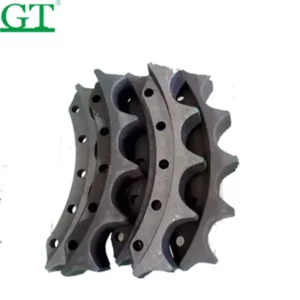
How does the design of the excavator front idler affect the machine’s maneuverability?
The design of the excavator front idler, which is part of the undercarriage assembly, can significantly impact the machine’s maneuverability through various factors:
- Track Alignment: The front idler helps maintain proper alignment of the track by guiding it along the track frame. Correct alignment is essential for smooth operation and efficient maneuverability, as misaligned tracks can cause increased resistance, uneven wear, and reduced traction.
- Track Tension: The front idler plays a crucial role in tensioning the track by adjusting the distance between the track links. Proper track tension ensures optimal engagement between the track and sprockets, minimizing slippage and maximizing traction, which is essential for maneuvering the excavator effectively.
- Reduced Friction: The design of the front idler aims to minimize friction between the track and idler by incorporating sealed bearings and smooth surfaces. Reduced friction reduces power loss, enhances fuel efficiency, and improves maneuverability by allowing the machine to move more freely and smoothly.
- Ground Clearance: The height and position of the front idler impact the ground clearance of the excavator, which affects its ability to navigate various terrains and obstacles. Adequate ground clearance provided by the front idler allows the excavator to traverse uneven terrain, debris, and obstacles without getting stuck or damaged, improving maneuverability in challenging conditions.
- Weight Distribution: The front idler, along with other undercarriage components, China excavator front idler suppliers contributes to the overall weight distribution of the excavator. Proper weight distribution helps maintain stability and balance during operation, enhancing maneuverability and preventing tipping or tilting, especially when navigating slopes or uneven surfaces.
- Impact Resistance: The front idler is subjected to impacts and shocks during operation, particularly when navigating rough terrain or encountering obstacles. A robust design with reinforced components and impact-resistant materials helps absorb shocks and vibrations, reducing stress on the undercarriage and improving maneuverability by ensuring smooth and stable movement.
- Durability and Reliability: The durability and reliability of the front idler are crucial for maintaining long-term maneuverability and performance of the excavator. A well-designed front idler with quality materials, effective sealing, and proper lubrication withstands the rigors of heavy-duty operation, minimizing downtime and maintenance-related issues that could affect maneuverability.
Overall, the design of the excavator front idler directly influences the machine’s maneuverability by ensuring proper track alignment, tension, reduced friction, adequate ground clearance, optimal weight distribution, impact resistance, and durability. These factors collectively contribute to the excavator’s ability to navigate various terrains, obstacles, and operating conditions with ease and efficiency.
How does the excavator ldler perform in high-speed applications?
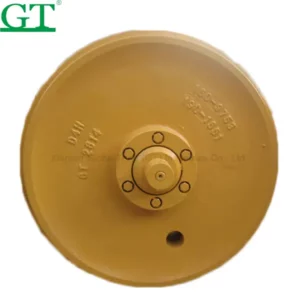
Working Principle and Application of Plate and Frame Filter Press
The plate and frame filter press is a widely used filtration equipment in various industries, including chemical, pharmaceutical, food and beverage, and water treatment. It is designed to separate solids from liquids using a combination of plates and frames, hence the name plate and frame filter press. In this article, we will explore the working principle and applications of the plate and frame filter press.
Plate and Frame Filter Press Bulkbuy
Working Principle:
The plate and frame filter press consists of a series of plates and frames that are arranged alternately. The plates are designed with a series of holes, while the frames are equipped with a filter medium, such as a filter cloth or paper. The liquid to be filtered is fed into the first plate, and the solids are captured by the filter medium in the frame.
The liquid then passes through the holes in the plate and flows into the next frame, where the process is repeated. This continues until the liquid reaches the final plate, where it is discharged as a filtrate.
The plate and frame filter press uses a combination of gravity and pressure to separate the solids from the liquids. The pressure is applied by a hydraulic system, which forces the liquid through the filter medium, ensuring that the solids are captured effectively.
The filter press can be customized to meet specific requirements, such as the number of plates and frames, the size of the holes, and the type of filter medium used.

Applications:
The plate and frame filter press has a wide range of applications in various industries, including:
Chemical Industry: The plate and frame filter press is used to separate solids and liquids in chemical processing, such as in the production of chemicals, pharmaceuticals, and fuels.
Food and Beverage Industry: The filter press is used to separate impurities from food and beverage products, such as fruit juice, wine, and edible oils.
Water Treatment Industry: The plate and frame filter press is used to remove impurities from water, such as suspended solids, bacteria, and viruses.
Pharmaceutical Industry: The filter press is used to separate solids and liquids in the production of pharmaceuticals, such as tablets, capsules, and injectables.
Benefits of Plate and Frame Filter Press Bulkbuy:
There are several benefits to purchasing a plate and frame filter press in bulk, including:
Cost-effective: Buying a plate and frame filter press in bulk can be cost-effective, as it eliminates the need for multiple purchases and transportation costs.
Customization: Bulkbuy allows for customization of the filter press to meet specific requirements, such as the size of the plates and frames, the type of filter medium, and the number of plates and frames.
Increased Efficiency: A plate and frame filter press bulkbuy can increase efficiency by reducing the time and labor required for multiple purchases and installations.
Better Quality Control: Bulkbuy allows for better quality control, as the entire batch of filter presses can be manufactured to the same specifications, ensuring consistency and reliability.
